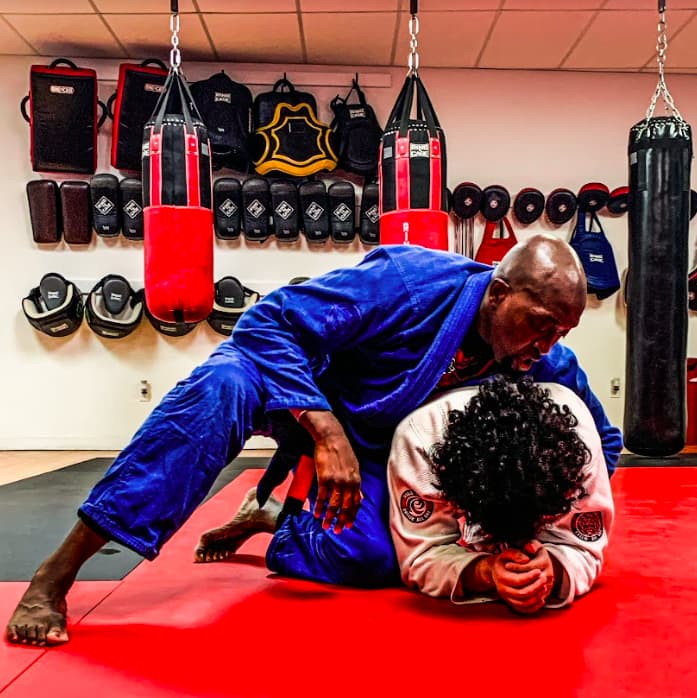Jiu Jitsu Training: The Great Thing About Training With Lower Belts

As you grow as a jiu-jitsu fighter, it is natural to want to train with people who are at your level or who are more experienced. If you’ve been at the same gym for several years, you’ll likely be friends with other people with whom you’ve grown as a fighter, and you may be most comfortable training with them. Meanwhile, you may recognize that training with more advanced fighters means an opportunity to learn something new.
At the other end of the spectrum are the white belts. Some may have come to jiu-jitsu after training in another martial art, and they may be formidable opponents in a mixed martial arts setting. Others may be completely new to martial arts. Either way, fighters who train in gyms where people of differing skill levels are not regularly paired up may think that there’s nothing to learn from these fighters.
They are wrong.
Being Competitive v. Training for Competition
Anyone who participates in a competition wants to do well in it. They want to win. It doesn’t matter if the competition is chess, swimming, or jiu-jitsu. Most people then hope to advance to more prestigious competitions with more challenging competition. Repeat this cycle enough times and you arrive at the world championship level where you have the opportunity to prove that you are the best in the world.
Getting to an elite level requires training, and there is a common belief that training with other elite athletes is necessary to get better results. In other words, you should train with the same level of people against whom you will later compete. Chess grandmasters should play against other chess grandmasters. Olympic swimmers should race against other Olympic swimmers. Black belts should roll with other black belts.
This may be true when you are preparing for major competitions, but within the world of jiu-jitsu this kind of training can hinder your development as a multidimensional fighter. As Lex Fridman said in a recent episode of his podcast, he went to Balance Studios in Philadelphia a lot as he was learning jiu-jitsu. The instructors there, Phil and Rick Migliarese, regularly pushed fighters to roll with people of all skill levels. You might get paired with a 20-year-old who just got their blue belt, take a break, and then get paired up with a 45-year-old black belt.
Upon moving away from this gym, he started only training solely with other black belts, and he found that he was learning less and less. Lex concluded in the below clip: “There’s a value to training with people who are much worse than you.”
An Easy Win Is a Lesson Lost
Training with other fighters at your level or above prepares you for elite competitions. It is absolutely necessary. However, training with other advanced fighters for the purpose of skill development can be counterproductive. As John Danaher explains, when your opponent is as at your level or is a better fighter than you, your chances of defeat are very high. Recognizing that they can exploit any mistake that you make means you probably won’t take many risks. Instead, you will rely on the moves that have the highest probability for success and victory. You’ll almost certainly make use of the same handful of moves that you’ve relied on for months or years. More importantly, they will too.

True, this may help both of you get more reps in, which is always beneficial, but you won’t develop as fighters. You’ll just go through the same sequences over and over with only minor variations. You won’t learn anything new, and you most certainly won’t develop techniques that are outside of your comfort zone.
If you were to fight this way against a white belt, it would get very boring. You would just destroy them over and over again. You would also miss out on the opportunity rolling with someone who is way less experienced than you affords, which is that you can try new things without fear of instantly getting shut down. If you make a mistake, they probably won’t notice. Even if they do, they won’t know how to exploit it. This gives you the opportunity to try out new things and develop new variations that may ultimately be more effective than the moves that are a steady part of your repertoire. It allows you to add new dimensions to your jiu-jitsu game and to expand your style.
Another point that John makes is that inexperienced fighters have nothing to lose when they go up against a black belt. If they lose, there is absolutely no shame in it. Moreover, they recognize that they have no chance of winning if they fight conservatively. Their only hope is to take risks, which means they may throw something at you that you’ve never had to defend against.
This is why John encourages his students to play with a variety of belt types. Though they should fine tune their abilities with more advanced fighters when they’re in the midst of competition cycles, he advises that even the most elite athletes spend the majority of their development time with lower belts to keep growing as fighters.

